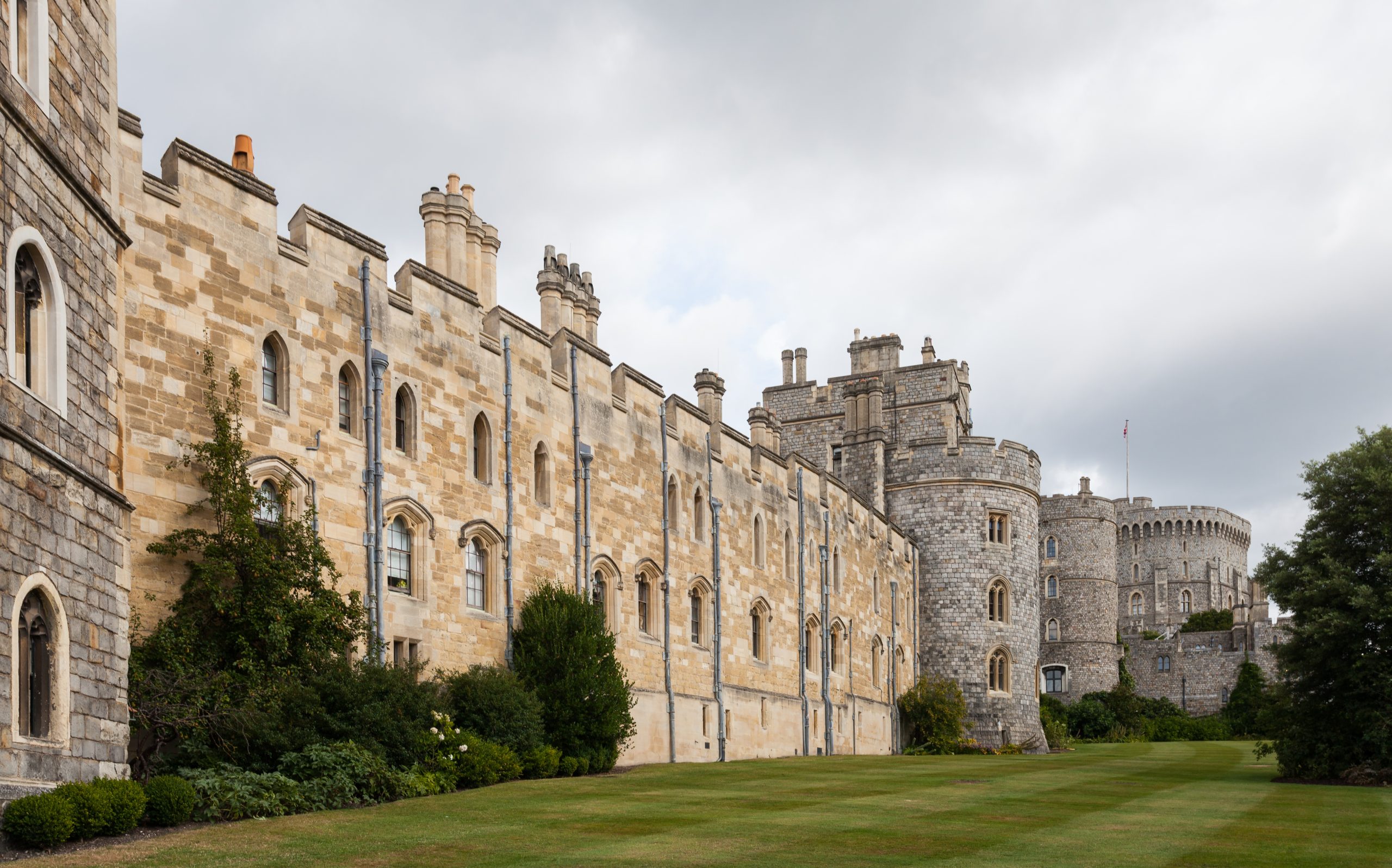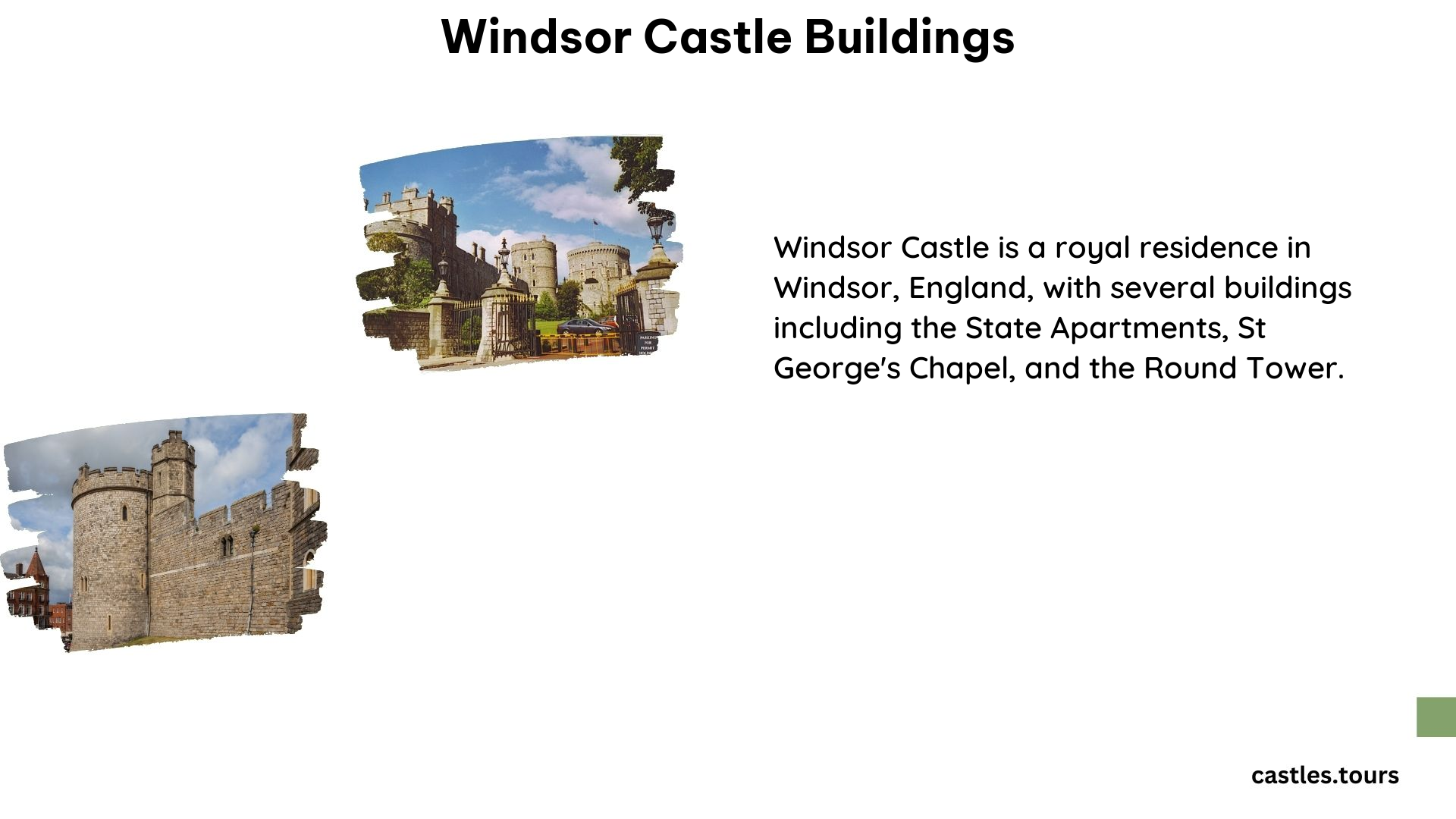Windsor Castle, the largest occupied castle in the world, has been a royal residence for over 900 years. Its architectural style has evolved over the centuries, reflecting the tastes and needs of various monarchs. From the original motte-and-bailey fortification to the Gothic-style renovations, the buildings of Windsor Castle are a testament to the rich history and grandeur of the British monarchy.
The Origins of Windsor Castle: William the Conqueror’s Motte-and-Bailey Fortress

The story of Windsor Castle’s buildings begins with William the Conqueror, who chose the site for its strategic location high above the River Thames and its proximity to a Saxon hunting ground. In the 1070s, the original castle was built as a motte-and-bailey fortification, with a keep on a man-made mound and a small bailey wall. This structure was designed to guard the western approaches to London and serve as a symbol of Norman power.
Transformations Under Henry II and Edward III

Over the centuries, the castle’s buildings underwent significant changes. In the 1170s, Henry II rebuilt the Round Tower and the outer walls of the Upper and Lower Wards in stone, replacing the original wooden structures. He also constructed the Royal apartments in the Upper Ward. Edward III, who was born at Windsor, extended the castle in the 1360s, creating the immense St. George’s Hall for the use of the Knights of the Order of the Garter. He also rebuilt the castle, making it the seat of the Order of the Garter.
The Gothic Makeover by George IV and Charles II
In the 19th century, George IV, a great lover of art and fine decoration, made significant alterations to the castle’s buildings. He refashioned the structures in the Gothic style, adding crenellations, turrets, and towers. The private apartments were moved from the north side to the south and east sides of the Upper Ward, and the rooms on the north side were designated for formal occasions and State visits. Charles II, who was determined to make the castle as splendid as possible, created a new set of State Apartments in the 1670s, using the skills of architect Hugh May and artist Antonio Verrio.
Windsor Castle Today: A Living Palace
During the Second World War, Windsor Castle was home to the young Princesses Elizabeth and Margaret Rose. In 1992, a major fire damaged several rooms, but the castle was restored over five years. Today, Windsor Castle remains a working palace and is open to visitors throughout the year, offering a glimpse into the architectural wonders that have shaped this iconic British landmark.
Key Facts about Windsor Castle Buildings
| Feature | Description |
|---|---|
| Location | Windsor Castle is situated on a ridge at the northeastern edge of the district of Windsor and Maidenhead in Berkshire, England. |
| Size | The castle occupies 13 acres (5 hectares) of ground above the south bank of the River Thames. |
| Courts | The castle comprises two quadrilateral-shaped building complexes, or courts, separated by the Round Tower. The lower ward includes St. George’s Chapel and the Albert Memorial Chapel. |
| State Apartments | The State Apartments run along the north of the Upper Ward and include the King’s Dining Room and the Queen’s Presence and Audience Chambers. |
| Waterloo Chamber | This chamber was created in the 1820s to display portraits commissioned by George IV to commemorate the defeat of Napoleon at the Battle of Waterloo. |
| Accessibility | The castle is accessible, with concessionary rates available for visitors with disabilities. An accessible café, toilets, and a Changing Places facility are available. |
Visiting Windsor Castle
- Opening Hours: Windsor Castle is open to visitors throughout the year. Check the official website for specific timings.
- Tickets: Tickets can be booked online or over the telephone. Concessionary rates are available for visitors with disabilities.
- Guided Tours: Windsor Castle-authorised Blue Badge Guides are welcome to guide within the Precincts but not inside the Castle.
- Accessibility Information: Detailed access information is available on the Royal Collection Trust website.
References
- The Royal Family. (n.d.). Royal Residences: Windsor Castle. Retrieved from https://www.royal.uk/royal-residences-windsor-castle
- Thamesweb. (n.d.). A Guide to Windsor Castle – Its construction and history. Retrieved from http://www.thamesweb.co.uk/windsor/windsorhistory/winguide02.html
- Royal Collection Trust. (n.d.). Windsor Castle. Retrieved from https://www.rct.uk/visit/windsor-castle
- Wikipedia. (n.d.). Windsor Castle. Retrieved from https://en.wikipedia.org/wiki/Windsor_Castle
- Britannica. (n.d.). Windsor Castle | History & Facts. Retrieved from https://www.britannica.com/topic/Windsor-Castle
